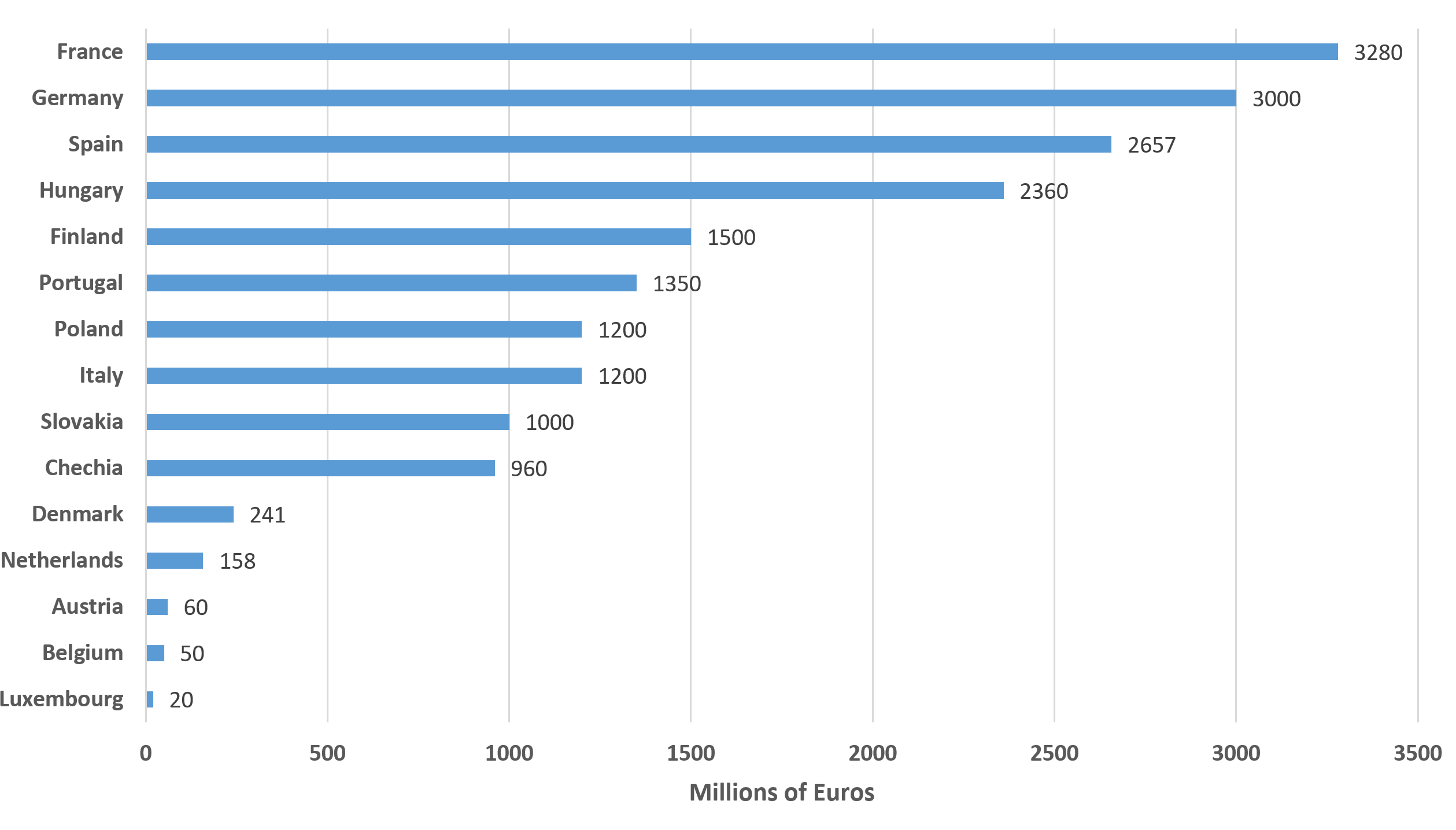
Newsroom / Center News
Decoding the Temporary Crisis and Transition Framework (TCTF)
On June 25, 2025, the European Commission adopted a new state aid framework aimed at accelerating green investments, reflecting the objectives of the Clean Industrial Deal State Aid Framework (CISAF), first announced in February.
This new toolbox, known as CISAF (Clean Industrial Deal State Aid Framework), is based on the existing Temporary Crisis and Transition Framework (TCTF), originally established to address the multidimensional challenges that emerged in the European economy following Russia’s invasion of Ukraine.
In essence, CISAF expands the scope of the TCTF, revises some of its parameters, and eliminates the lengthy approval procedures previously required by the European Commission’s Directorate-General for Competition.
Given the current timing, it is crucial to assess the effectiveness of the existing framework, as both it and its successor (CISAF) will significantly influence the flow of investments currently being planned or implemented over the coming years.
Following Russia’s invasion of Ukraine on February 24th, 2022, it quickly became clear that the upcoming war would have substantial economic consequences for all EU member states.
Indeed, disruptions in trade flows and supply chains, unprecedented increases in the prices of natural gas, electricity, and other raw materials led to inflation and a slowdown in economic growth across a wide range of sectors.
The European Commission immediately responded by introducing the Temporary Crisis and Transition Framework (TCTF)—a set of state aid rules granting member states the flexibility to support their economies in the face of the crisis. The initial Temporary Crisis Framework (TCF) was adopted in March 2022 and was expanded in March 2023 to include the “Transition” component—thus becoming the TCTF. The TCTF consists of 8 Articles, each outlining different types of state aid that each member state can grant to businesses.
The HELLENiQ ENERGY Center for Sustainability and Energy @ Alba Graduate Business School conducted a detailed analysis of Article 2.8 of the TCTF, which provides investment support measures for:
- the construction of strategically important equipment such as batteries and accumulators, solar panels, wind turbines, heat pumps, electrolysers, and carbon capture, utilization, and storage (CCUS) equipment;
- the production of key components for the aforementioned categories of equipment;
- the production or recycling of critical raw materials necessary for these technologies.
More specifically, member states can provide support per enterprise ranging from €150-350 mil., covering 15-60% of investment costs, depending on the size of the enterprise and its geographical location (with small businesses in disadvantaged areas eligible for the highest levels of support). The form of state aid can include direct grants, tax relief, or other benefits such as deferred social security contributions or other public charges.
The analysis highlighted the successful implementation of the TCTF with 21 approved aid schemes by the European Commission, following applications from 15 countries, with a total budget of €19 billion.

TCTF Article 2.8 – Budgets of Approved State Aid Schemes
The above figure shows the budgets of the approved state aid schemes per country. France, Germany, and Spain clearly stand out with the largest declared budgets. These countries have committed to allocating these funds to eligible businesses after competitive or administrative procedures. The deadline for issuing these decisions at the national level is December 31, 2025.
When Gross Domestic Product (GDP) is taken into account, another dimension emerges. Hungary has proportionally allocated the highest budget among all countries. The case of Spain is also notable, 50% of its approved budget is dedicated exclusively to the construction of vehicle batteries. Lastly, in the cases of France and Finland, nearly all state aid is implemented through tax relief mechanisms.
These figures clearly show that Article 2.8 of the TCTF has attracted strong interest from EU member states. Its effectiveness will ultimately be evaluated based on the degree to which the related investments are implemented. In practice, the transparency requirements for governing state aid will allow for a comprehensive review after the final decision deadline (end of 2025).
At this stage, it is worth highlighting that the TCTF - particularly Article 2.8 - stands out as an innovative funding tool with the following characteristics:
- Flexibility in the Type of State Aid: TCTF - Article 2.8 allows for a wide range of support mechanisms (grants, tax relief, subsidized loans, guarantees), offering member states the ability to tailor aid programs to their national industrial and economic needs.
- Fast-Track Funding: Compared to previous state aid rules, the TCTF provides a significantly faster approval process, reducing administrative burden and accelerating funding, which is crucial for the fast-paced and capital-intensive nature of green investments.
- Strategic Response to Global Competition: The TCTF - Article 2.8 includes provisions to ensure strategic green investments remain within the EU rather than being diverted to third countries. It also serves as a necessary counterbalance to similar aid programs by global competitors, notably the Inflation Reduction Act (IRA) in the U.S.
- Support for Strategic Technologies: TCTF - Article 2.8 provides incentives for the manufacturing of technologies critical for the net-zero transition, such as batteries, solar panels, wind turbines, heat pumps, electrolysers, and carbon capture and storage (CCUS).
- Aid of Higher Intensities: TCTF - Article 2.8 allows for significantly higher levels of aid compared to previous frameworks—essential for supporting large-scale decarbonization investments. It also applies a differentiated approach, offering higher support rates for small businesses and projects in decentralised areas, promoting the decentralization of Europe’s green manufacturing industry.
In summary, TCTF - Article 2.8 is a strong and potentially effective financial tool for green investments in the EU. Characterized by its flexibility, rapid EU-level approvals, and targeted support for strategic technologies. This tool enables member states to strengthen their green manufacturing base, accelerate decarbonization, while enhancing their competitiveness. The foundation laid by the TCTF has led to the adoption of CISAF, which is expected to act as a catalyst for the green transition of European industry sector and sustainable development more broadly.





